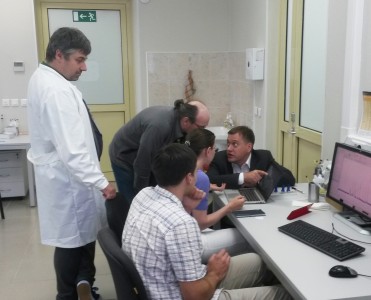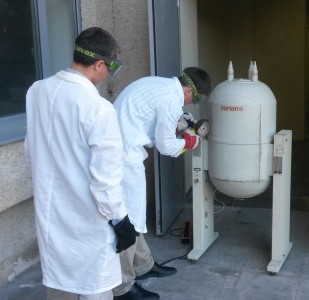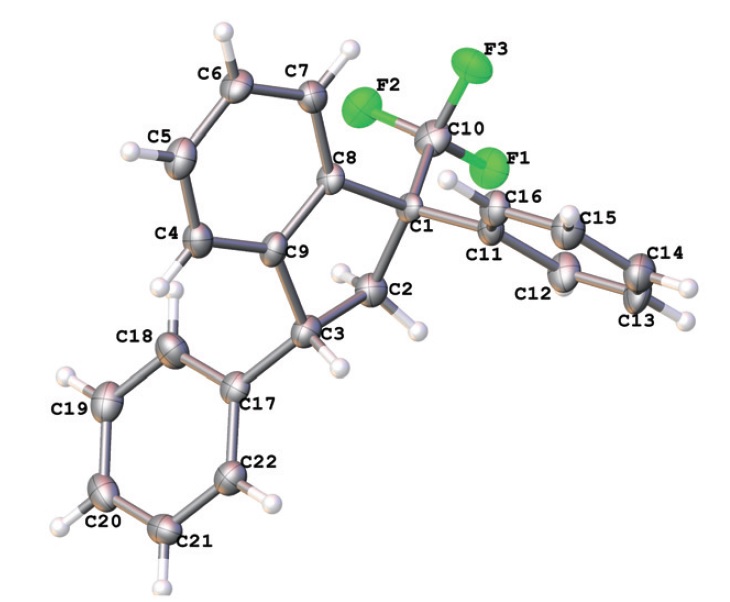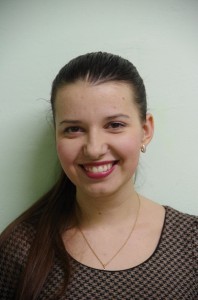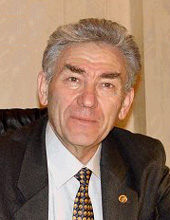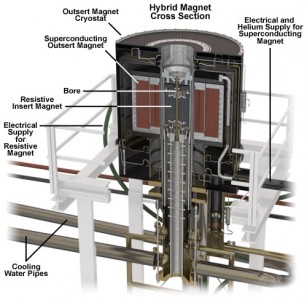
On September 8th Dr. Tomasz Kozlecki (Wroclaw University of Technology, Poland) will present a lecture titled “Synthesis and biological activity of selected nanoparticles”. The seminar will take place at 16:00 at the Institute of Chemistry in the audience 1093.
More information you can find here.
Dr. Tomasz Kozlecki has presented a lecture
Visitor from Wroclaw University of Technology
MRI setup for Bruker Avance 400WB
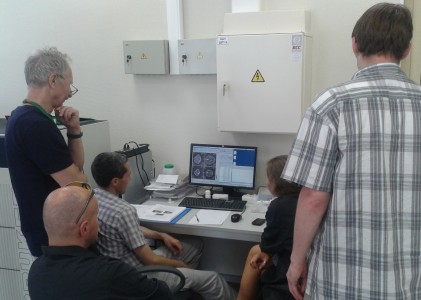
CMR specialist A.S. Mazur with colleagues (A.V. Dobrodumov, O.M. Osmolovskaya, V.A. Korzhikov and others) are testing the MRI setup for Bruker Avance 400WB spectrometer. On screen: lab mice MR-images.
Organic & Biomolecular Chemistry 2015, 13, 8827-8842
R.O. Iakovenko, A.N. Kazakova, V.M. Muzalevskiy, A.Yu. Ivanov, I.A. Boyarskaya, A. Chicca, V. Petrucci, J. Gertsch, M. Krasavin, G.L. Starova, A.A. Zolotarev, M.S. Avdontceva, V.G. Nenajdenko, A.V. Vasilyev
“Reactions of CF3-enones with arenes under superelectrophilic activation: a pathway to trans-1,3-diaryl-1-CF3-indanes, new cannabinoid receptor ligands”
Org. Biomol. Chem., 2015, 13, 8827-8842
DOI:10.1039/c5ob01072a
4-Aryl-1,1,1-trifluorobut-3-en-2-ones ArCH=CHCOCF3 (CF3-enones) react with arenes in excess of Brønsted superacids (TfOH, FSO3H) to give, stereoselectively, trans-1,3-diaryl-1-trifluoromethyl indanes in 35–85% yields. The reaction intermediates, the O-protonated ArCH=CHC(OH+)CF3 and the O,C-diprotonated ArHC+CH2C(OH+)CF3 species, have been studied by means of 1H, 13C, 19F NMR, and DFT calculations. Both types of the cations may participate in the reaction, depending on their electrophilicity and electron-donating properties of the arenes. The formation of CF3-indanes is a result of cascade reaction of protonated CF3-enones to form chemo-, regio- and stereoselectively three new C–C bonds. The obtained trans-1,3-diaryl-1-trifluoromethyl indanes were investigated as potential ligands for cannabinoid receptors CB1 and CB2 types. The most potent compound showed sub-micromolar affinity for both receptor subtypes with a 6-fold selectivity toward the CB2 receptor with no appreciable cytotoxicity toward SHSY5Y cells.
Visitors from the KPFU
Today Prof. Dr. A.V. Aganov, head of the Medical Physics department of Kazan Federal University, has visited our center.
July
Total in June 937 service applications were carried out.
All together measured:
- 888 1H spectra
- 184 13C spectra
- 66 DEPT spectra
- 26 COSY spectra
- 3 NOESY spectra
- 25 31P spectra
- 75 19F spectra
93 applications were carried out.
MagLab
National High Magnetic Field Laboratory (MagLab) is the largest and highest powered magnet lab in the world. The MagLab has seven user facilities located across three campuses. MagLab offers scientists from across the globe free access to unique instruments and expertise.
Among the instruments there are several record holders, including the 45-tesla hybrid magnet, which offers scientists the strongest continuous magnetic field in the world. Also there are resistive magnet cells, several superconducting magnets operating at millikelvin temperatures, pulsed magnets ranging from 50T to 100T, and up to the 300T Single Turn Magnet, of different pulse widths to support a wide variety of users.
June
Total in June 1092 service applications were carried out.
All together measured:
- 1061 1H spectra
- 241 13C spectra
- 72 DEPT spectra
- 34 COSY spectra
- 13 NOESY spectra
- 46 31P spectra
- 36 19F spectra
176 applications were carried out.
